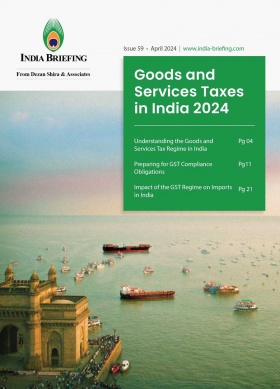Old vs New Income Tax Regime in India: How to Choose the Right Tax Option
We provide an overview and comparison of the old vs new income tax system in India and the proposed changes announced in the Union Budget 2024-25 to assist taxpayers in making an informed choice. It must be noted that the tax slabs and tax rates remain the same under the old tax system as the government wants to make the new tax regime, first announced in Union Budget 2020-21, more appealing to the middle class.
The Union Budget 2024-25 announced on July 23, 2024 introduced key changes to the new income tax regime. This includes an increase in the standard deduction from INR 50,000 (approx. US$597.1) to INR 75,000 (approx. US$895.7). Expressing optimism on the proposed changes, India’s Minister of Finance Nirmala Sitharaman noted that this would enable salaried workers opting for the new tax system to save a significant amount in income tax.
Union Budget 2024 did not make any changes to the old tax regime, under which the government will continue to allow for deductions like home loan interest payments.
The new tax regime is the default personal income tax structure in India but taxpayers can still opt for the old tax regime.
In this article, we provide an overview of both tax regimes to help taxpayers make an informed choice. For assistance in devising an optimal tax strategy best suited to your employee income structure, contact our experts at india@dezshira.com.
Changes introduced to the new income tax regime in Union Budget 2024-25
Individual taxpayers are subject to tax under the Indian income tax system depending on the income or profits they have made – which is the taxable income. The new tax regime for individuals and Hindu Undivided Families (HUF) was first introduced in the Union Budget 2020-21. From time to time, the finance minister has proposed changes to the new tax regime under various union budget announcements.
Tax savings and standard deduction
- Standard deduction: The standard deduction has increased from INR 50,000 (approx. US$597.1) to INR 75,000 (approx. US$895.7) under the new tax regime.
- Rebate under Section 87A: Salaried individuals with incomes up to INR 775,000 (approx. US$9256.9) can use the INR 75,000 (approx. US$895.7) standard deduction and claim a rebate of up to INR 25,000 (approx. US$298.6).
- Concessional surcharge rate: For those earning more than INR 50 million (approx. US$597,225), the surcharge rate has been reduced from 37 percent to 25 percent in the new regime, decreasing the effective tax rate from 42.744 percent to 39 percent.
Changes to personal income tax slabs in the new tax regime
|
Changes to the New Tax Regime – FY 2024-25 |
|
|
Revised structure |
Rate (%) |
|
INR 0-300,000 |
Nil |
|
INR 300,000 to INR 700,000 |
5 |
|
INR 700,000 to INR 1 million |
10 |
|
INR 1 million to INR 1.2 million |
15 |
|
INR 1.2 million to INR 1.5 million |
20 |
|
Above INR 1.5 million |
30 |
According to the government, all taxpayers who choose the new tax regime will be able to receive tax benefits up to INR 17,500 (approx. US$209).
To be noted, the following items cannot be claimed under the new tax regime: house rent allowance (HRA), leave travel allowance (LTA), reimbursement for mobile and internet, food coupons or vouchers, company-leased automobile, standard deduction, uniform allowance, and leave encashment.
Accordingly, taxpayers could choose to pay less in taxes without being able to take advantage of exemptions and deductions. Previously, when it was first implemented, the new tax system comprised of seven distinct slabs.
Old tax regime
Despite having higher tax slabs, the old tax system has remained the mainstay for taxpayers in India since it gives those with greater yearly earnings and more investments more room for tax deductions.
Under the old tax regime, by claiming deductions under sections 80C, 80D, 80TTA, and 80TTB of the Income-tax Act 1961, as well as tax exemptions on house rent allowance, leave travel concession, and other items, an individual can reduce their gross taxable income.
The following expenses are deductible under the old tax regime: Public Provident Fund (PPF), Equity-Linked Savings Schemes (ELSS), Employees’ Provident Fund (EPF), life insurance premiums, principal and interest payments on a mortgage, health insurance premiums, investments in NPS, child tuition fees, and interest on savings accounts.
|
Income Tax Slabs Under the Old Tax Regime [Unchanged as of FY 2024-25] |
|
|
Income tax slabs |
Income tax rate (%) |
|
INR 0 – 250,000 |
0 |
|
INR 250,000 – 500,000 |
5 |
|
INR 500,00 – 1,000,000 |
20 |
|
INR 1,000,000 and above |
30 |
New vs. old income tax regime: Which is more beneficial for you?
Despite the old income tax regime’s continued deduction benefits, the new regime presents lower tax slabs for salaried individuals earning up to INR 700,000 (approx. US$8361.1), INR 1 million (approx. US$11,944.5), and INR 1.2 million (approx. US$14,333) annum.
Additionally, salaried individuals with an income of INR 775,000 (approx. US$9256.9) are exempt from paying taxes under the new regime, thanks to the increased standard deduction of INR 75,000 (US$895.7) and a rebate of up to INR 25,000 (US$298.6) under Section 87A, bringing their tax liability to zero.
In essence, the new tax regime is more appealing for those earning up to INR 1.2 million (approx. US$14,333) per year. However, its advantage depends on the taxpayer’s investment scenario, as higher investments may still make the old regime with its deductions more beneficial.
Therefore, it is advisable for taxpayers to seek guidance from tax professionals to determine which regime offers the best tax savings for their specific situation.
In the old tax regime, taxpayers are motivated to choose specific instruments for their investments to be eligible for tax reduction.
|
Calculation of Tax Savings Under New Tax Regime: Previous vs Revised Tax Slab |
|||||
|
Proposed tax slabs |
Rate of tax |
Amount of tax |
Tax slab (before July 23, 2024) |
Rate of tax |
Amount of tax |
|
0-300,000 |
Nil |
– |
0-300,000 |
Nil |
– |
|
300,001 -700,000 |
5% |
20,000 |
300,000 – 600,000 |
5% |
15,000 |
|
700,001 – 1 million |
10% |
30,000 |
600,001 – 900,000 |
10% |
30,000 |
|
1 million – 1.2 million |
15% |
30,000 |
900,001 – 1.2 million |
15% |
45,000 |
|
1.2 million to 1.5 million |
20% |
60,000 |
1.2 million to 1.5 million |
20% |
60,000 |
While the new income tax regime is the default option for taxpayers in India, they still have the option of choosing the old tax regime every year. This is applicable only if the individual doesn’t have a business income.
Starting FY 2023-24, a taxpayer with business income who specifically wants to continue paying taxes under the old tax regime, will have to opt for it. They would have the choice to convert to the new tax regime only once in their lifetime and cannot then switch back to the old tax regime.
(US$1 = INR 83.73).
This article was originally published February 7, 2023. It was last updated July 29, 2024.
About Us
India Briefing is one of five regional publications under the Asia Briefing brand. It is supported by Dezan Shira & Associates, a pan-Asia, multi-disciplinary professional services firm that assists foreign investors throughout Asia, including through offices in Delhi, Mumbai, and Bengaluru in India. Readers may write to india@dezshira.com for support on doing business in India. For a complimentary subscription to India Briefing’s content products, please click here.
Dezan Shira & Associates also maintains offices or has alliance partners assisting foreign investors in China, Hong Kong SAR, Dubai (UAE), Indonesia, Singapore, Vietnam, Philippines, Malaysia, Thailand, Bangladesh, Italy, Germany, the United States, and Australia.
- Previous Article India to Consider Easing Rules for FDI and Overseas Investments
- Next Article India to Enforce Mandatory BIS Standards for Chemicals and Petrochemicals








